World’s Deadliest Animals (and How to Avoid an Attack)
From more obvious, like snakes, to those that are seemingly innocent, like freshwater snails, meet the deadliest animals on Earth.
The planet is full of ferocious beasts, most of which you’ll never run into, but if you do, it’s always best to know what to do and how to avoid danger.
From more obvious, like snakes, to those that are seemingly innocent, like freshwater snails, meet the wild animals with a serious body count — and learn ways to prevent an attack if you happen to encounter one out in the wild.
Snakes

Getty Images
A snake bite is something you want to avoid. Not every snake is venomous, but the ones that are, do pack a deadly wallop. Up to 8,000 people a year get bitten by venomous snakes in the U.S., and of those, at least five people die.
Disability and permanent injuries are also possible and far more prevalent. Snake bites usually occur in the warmer months, from April to October.
How to Avoid Danger
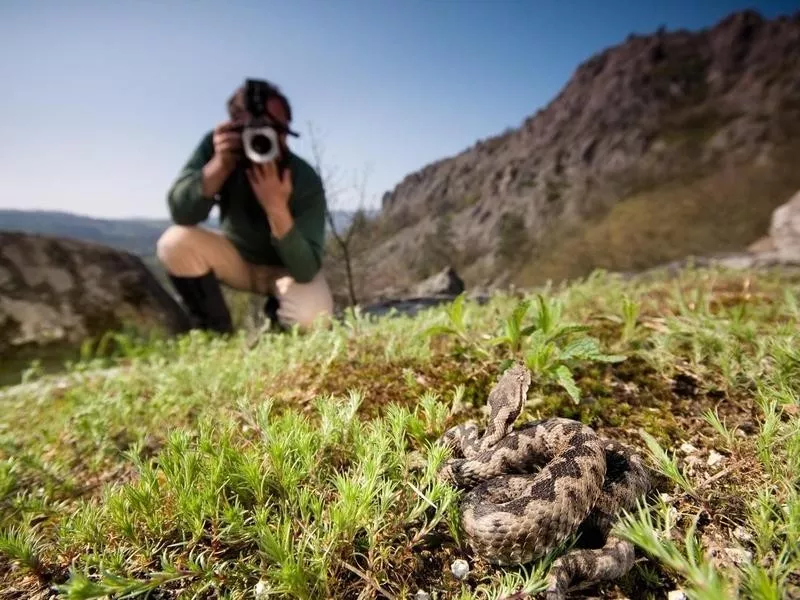
Getty Images
Snakes hide everywhere there’s a space in which to fit — tall grass, rocky landscapes and fallen logs, bluffs, swamps and even holes in the ground are places they call home — so watch where you step. If you can, poke the ground ahead with a stick, and wear long pants and thick boots, so bites will be less likely to penetrate skin.
In the event of a bite, stay calm and lift the appendage where the wound above the heart. Take off anything tight (including jewelry) before swelling occurs and clean the wound. For venomous bites, get medical help immediately.
Box Jellyfish

Getty Images
Usually found in the southern Pacific Ocean, this jelly swims with intention (most actually float), and due to its translucence, it is hard to see. It’s tentacles reach 10 feet in all directions, and its sting is usually fatal.
Their venom can cause cardiac, nerve and muscle damage in a matter of minutes — yikes!
How to Avoid Danger
The only way to avoid danger is not to swim where the box jellyfish does. Time is of the essence in getting medical attention after a bite. The victim needs to be moved to dry land immediately, where the tentacle must be removed from the person’s skin.
The area should be rinsed with vinegar for 30 seconds to stop the venom from spreading. CPR may also need to be administered.
Freshwater Snails

Getty Images
A freshwater snail doesn’t seem deadly, but because of the parasites it carries, it’s responsible for more than 200,000 deaths a year worldwide. It brings about a disease called schistosomiasis, which has infected about 250 million people, mostly in Asia, Africa and South America.
The parasites in a freshwater snail penetrate through a host’s skin and make their way to blood vessels where they live for decades. Gradually, they lodge in tissues and cause anemia, fatigue and even death.
How to Avoid Danger
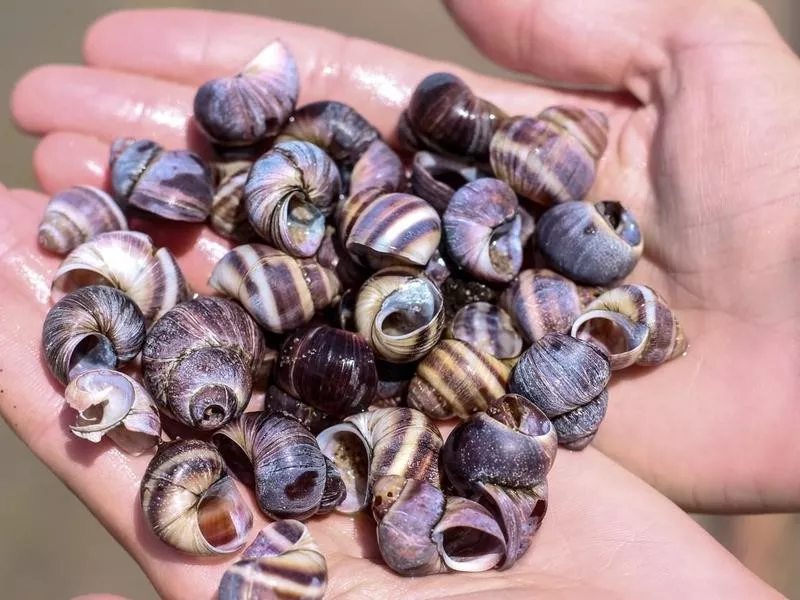
Getty Images
You don’t even need to be in contact with a snail to get schistosomiasis — just the water itself. The best away to avoid the parasite is to not go in the water.
Schistosomiasis is treated with a drug called praziquantel, which works best after the parasites have grown to maturity in the host’s system.
Scorpions
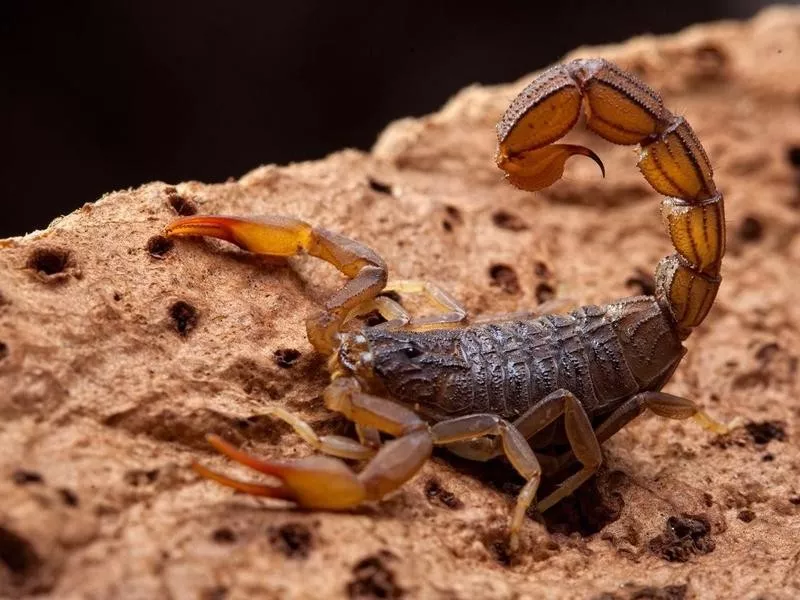
Getty Images
Found in the Southwestern U.S., scorpions are usually found in more rural areas. They are small enough to make their way into homes, but luckily, out of the 90 species of scorpion that exist, only one, the Arizona bark scorpion, is fatal.
Scorpions love standing water, small cracks and holes around the home. They can nest in furniture and other dark places, so keeping these areas sealed from the outside is paramount.
How to Avoid Danger
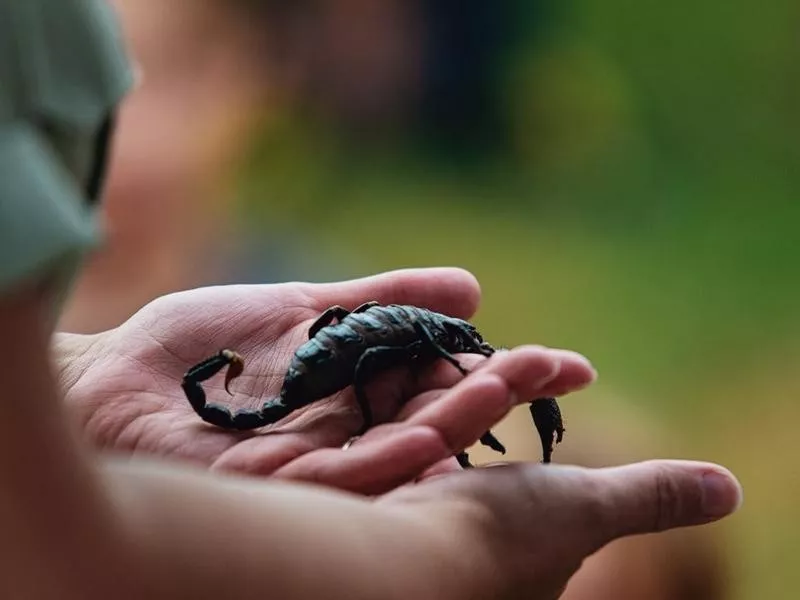
Getty Images
While painful, a bite victim may not need medical attention if there aren’t additional symptoms; however, children should be taken to the doctor.
Any adult victims who have difficulty breathing, muscle control issues, nausea and vomiting, sweating, hypertension or tachycardia should seek medical help immediately.
Puffer Fish
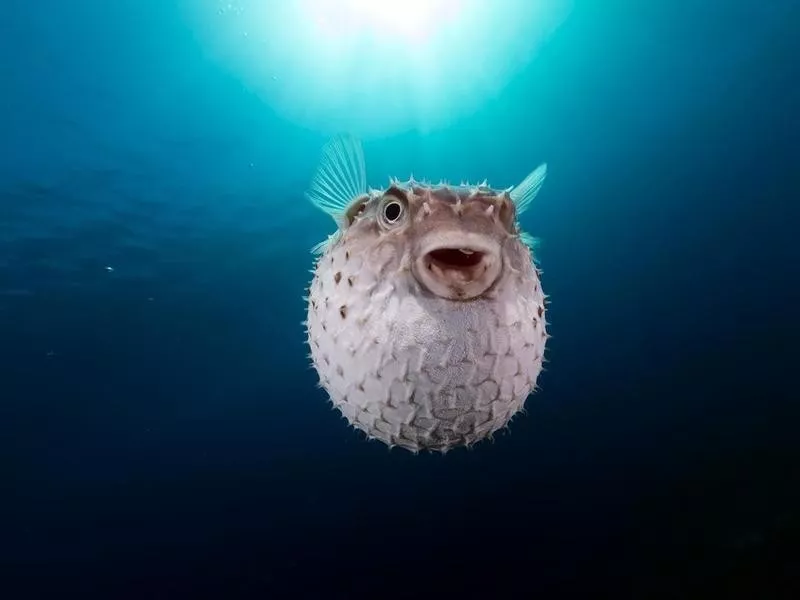
Getty Images
You’re not going to be stung or bitten by a puffer fish — they’re not aggressive. They do, however, have a poison 100 times more lethal than cyanide coursing through their bodies. They are a sashimi delicacy called fugu, which is popular among more adventurous foodies in Japan.
If they are served by someone that doesn’t know what they’re doing, the hungry recipient ends up with puffer fish poisoning.
How to Avoid Danger
Most people who eat the fish are safe — again, safety is down to finding a well-trained sushi chef. WE REPEAT: DO NOT TRY CUTTING THIS FISH AT HOME.
There is no antidote to puffer fish poisoning — an afflicted person can only be placed on a ventilator until the venom makes its way out of the body.
Great White Sharks

Getty Images
Great Whites live in temperate waters around the U.S., South Africa, Japan, Chile and the Mediterranean. The largest, deadliest predatory shark of all, it can swim up to 40 mph. With its 300 teeth, it’s responsible for half of the shark attacks that occur in the world.
Surprisingly, they don’t go out of their way to hunt people. Most of the time, they leave humans alone unless they are curious or confused, which is when they bite by accident.
How to Avoid Danger
Be aware of your surroundings and don’t swim in areas where there are fishing boats, as that’s where they’ll congregate for food. Don’t swim at night, and don’t wear sparkly jewelry or bright colors. Don’t bleed or urinate in the water, swim with friends, and stay horizontal.
If you are circled or bumped that means the shark is about to strike. Defending yourself with your fists or any other weapon you may have is the only answer — when you punch, aim for the eyes and gills. If bitten, apply pressure to the area, and get out of the water. Seek medical help immediately.
Hippos
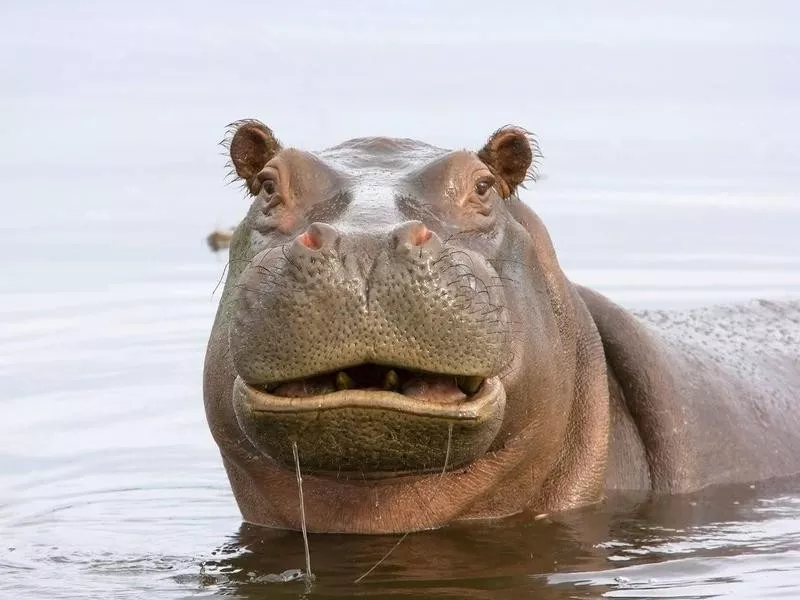
Getty Images
Hippos look friendly, but they are some of the deadliest animals on the planet. At 5-feet high, almost 17-feet long and 9,000 pounds with teeth that are a foot-and-a-half long, their aggressive nature makes them one of the kings of the African jungle.
They travel in search of food daily, and that’s one of the ways they run into humans.
How to Avoid Danger
If you run into a hippo, let your presence be known. If you’re in the water and they’re close, slap it with an object, move in the opposite direction or go away from shore, as they stay in shallow areas.
On land, if they flash their teeth, yawn or laugh, immediately leave the area and find cover. Run in a zig-zag line because it’s difficult for them to change direction quickly. Avoid being around a mother with calves and during mating season.
Lions

Getty Images
This majestic animal doesn’t go looking for trouble when it roams the plains of Africa. But with the tourism boom over the past few decades, lions are coming closer and closer to humans.
While they are still shy of people on foot, they approach passing vehicles filled with tourists closer and closer each year.
How to Avoid Danger
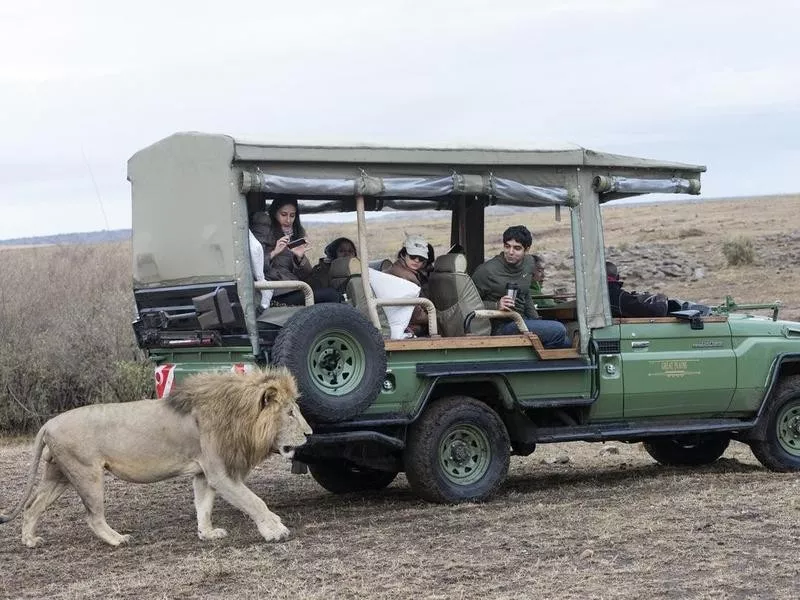
Getty Images
Lions are lightning fast and can easily charge. If you are on foot, don’t run or turn your back. Stand your ground, make noise and wave your hands.
It’s all about looking like a bigger animal, which will usually cause them to retreat.
Elephants
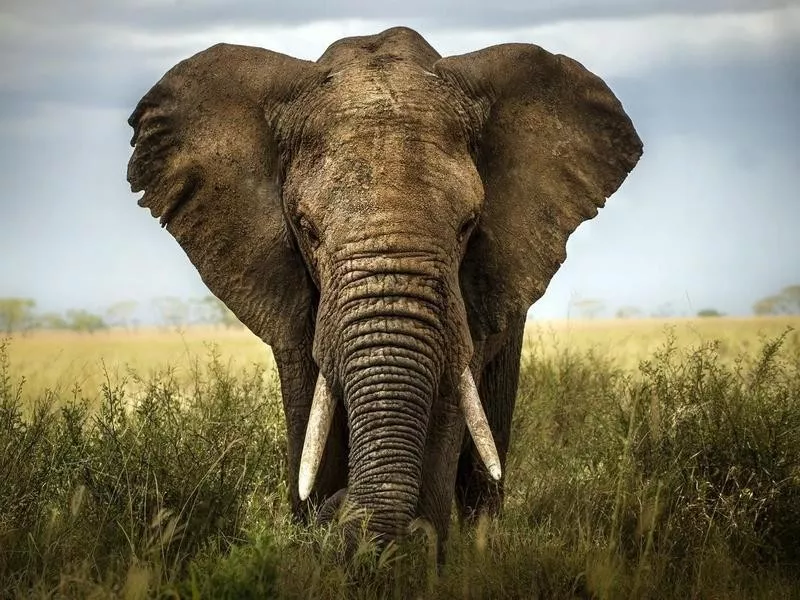
Getty Images
Elephants are generally docile but can throw their weight around to deadly effect. They can be extremely aggressive when it comes to protecting their young.
Elephants are expressive animals — when they attack they’ll give ample warning by standing tall, charging, shaking their heads, or swinging and blowing their trunk.
How to Avoid Danger
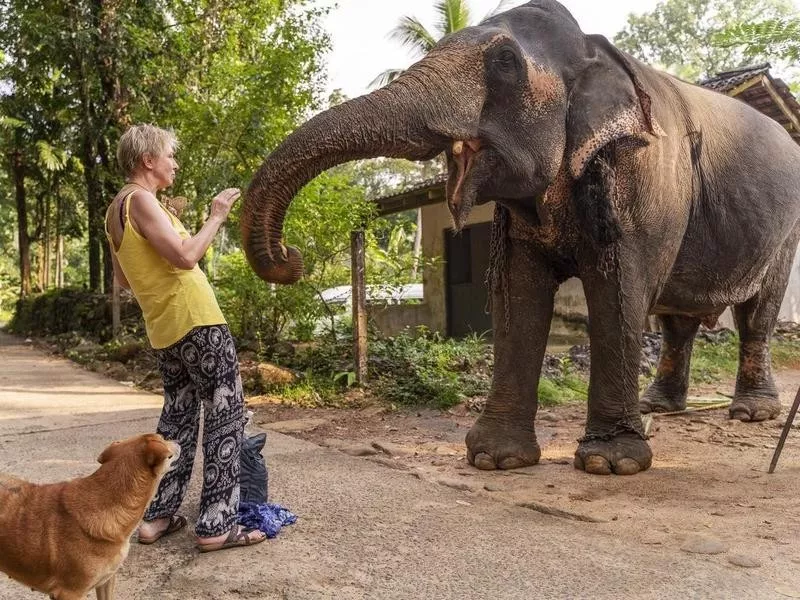
Getty Images
When in an area with elephants, be aware of your surroundings, particularly escape routes and terrain. Make slow, deliberate moves. Don’t get close to the animals if you’re in a car, and turn off the engine.
If they approach within 65 feet, turn the car on and slowly back away, as they have been known to crush cars.
Crocodiles

Getty Images
There are 11 species of crocs around the world that will attack humans if given the chance. That includes the West African crocodile, the American crocodile and alligator, and the Orinoco crocodile, to name a few.
These positively prehistoric animals evolved around 200 million years ago and haven’t changed much since. What makes them dangerous is their bite, which has one of the strongest forces of all predators. They can also submerge themselves underwater for up to two hours and strike as prey passes.
How to Avoid Danger

Getty Images
The easiest way to avoid them is be aware of your surroundings and don’t get near areas they inhibit. Crocs “lock” their jaws — and once they get hold of prey they won’t let go.
Their eyes, nostrils and throat are their most vulnerable areas, so poking in those places may allow for release. If you manage to get free of a croc, seek medical attention immediately.
Dogs
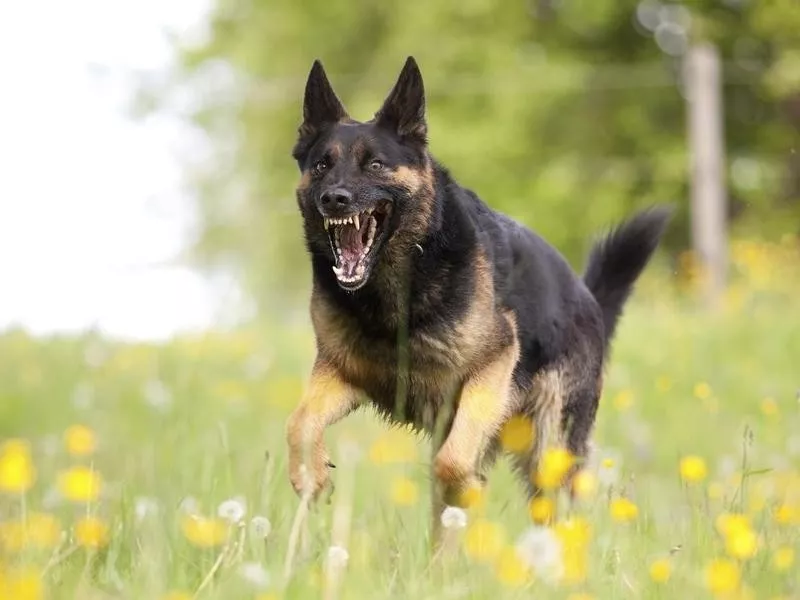
Getty Images
Dogs are domesticated all over the world, but humans can find themselves attacked by strays or feral dogs that roam in packs as well as their own pets. In the U.S. alone, there are over 5 million dog bites annually, 800,000 of which will require medical attention.
Maulings are a different story—while they happen less, they are more disfiguring and are sometimes fatal, particularly if there is more than one dog involved. When dogs show aggression, they circle, growl, snap and lunge, with the intention of taking down their prey.
How to Avoid Danger

Getty Images
Anyone confronted with an aggressive dog should stand still with a neutral, straight posture. Eye contact depends on whether the confrontation happens inside or outdoors. If in a small space, avoid direct eye contact and slowly step away from the dog, but don’t turn your back and keep your movements slow and small. Don’t show your teeth, as that can be seen as aggressive.
Tell the dog to sit or stay — chances are it may have prior training. If that doesn’t work, prepare to defend yourself with whatever weapon you have handy. If you are outdoors, slowly back away and look for shelter or higher ground.
Bears
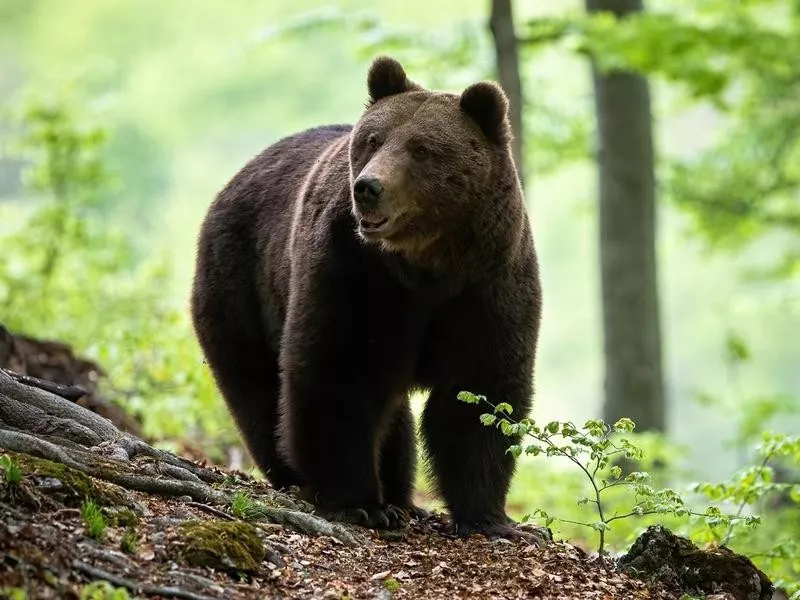
Getty Images
Bears are seen all over the world, and our contact with them is becoming more frequent as we encroach upon their lands. They are generally shy of humans and are usually just looking for food, but attacks have occurred.
They will call a human’s bluff by charging toward them if they are too close — they’ll puff themselves up to look more imposing with their ears up and head forward.
How to Avoid Danger

Getty Images
If you’re in an area where bears are known to be, carry bear pepper spray and keep all food sources in airtight containers. If confronted with a bear, talk calmly, but remain still and stay calm if one comes close. If there are small children with you, pick them up. Make yourself look as large as possible.
Travel in groups, as bears are more intimidated by them. If the bear is stationary, move away sideways. Don’t run, take your eyes off the bear or attempt to climb a tree. Do not approach a mother with cubs — she will more likely see you as a danger.
Deer
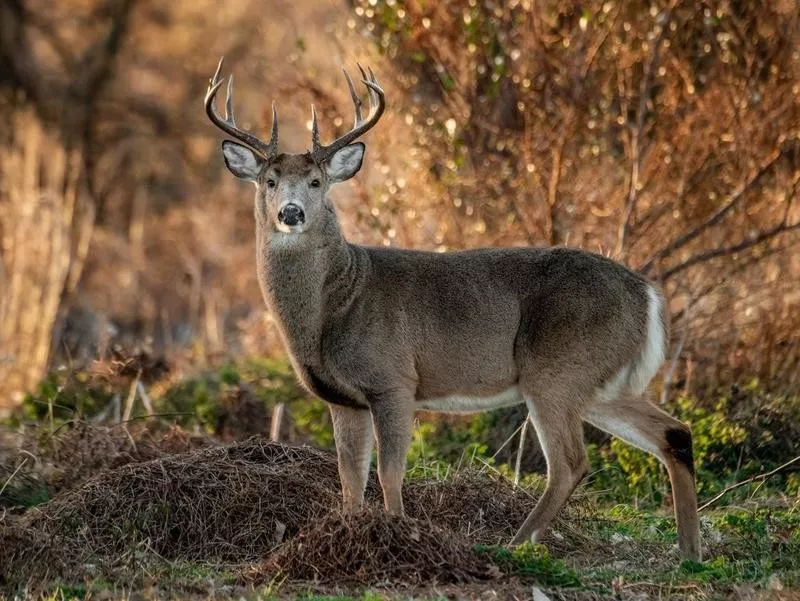
Deer are all around us, and they are shy of humans, but a deer attack is not unheard of.
They will protect their offspring if they feel threatened, and there have been cases of bucks charging people during mating season.
How to Avoid Danger

Getty Images
Don’t assume every fawn you see by itself has been abandoned — their mothers are usually nearby. Don’t feed deer, and don’t approach them, particularly fawns. Never turn your back on a deer if it approaches, and do not run.
Make yourself appear large and make noise as you back away. Deer will usually not give chase. If you are attacked, try and protect your head and face by curling up in a ball. The animal will likely get bored and moved along.
Canadian Geese

Getty Images
Geese are birds of prey and have no qualms about attacking humans, particularly during nesting season. If you’re in their territory at that particular time, the likelihood increases that they will defend themselves and their offspring.
Some of their attacks have involved broken bones, head trauma or even death. Over the years, geese have lost their fear of humans, which is why it’s preferable not to feed them.
How to Avoid Danger
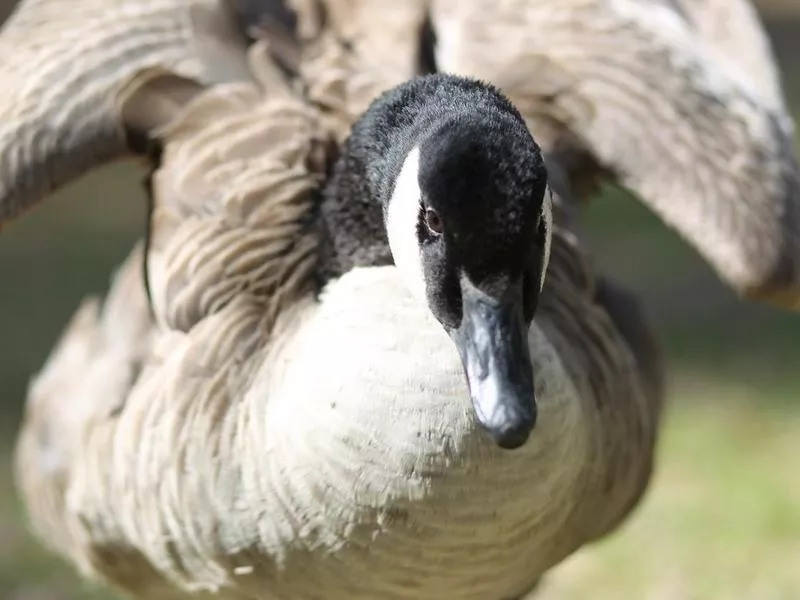
Getty Images
If you’re near a goose that’s ready to attack, keep eye contact — don’t turn away and certainly don’t run. Back away and watch for obstacles around you as you go — most injuries occur when people fall trying to get away from a goose.
If it flies towards your face, duck at a 90-degree angle in the direction that the goose is flying while facing it.
Hyenas

Getty Images
Hyenas roam the African continent and seem small but they’re not — spotted hyenas can weigh up to almost 200 pounds and have jaws that can crush bones in seconds.
They have the strength to take down a much larger animal, and they can break a human’s ribs simply by charging them.
How to Avoid Danger

Getty Images
It’s impossible to outrun a hyena — they can reach speeds of up to 40 mph. The only real way to survive an attack is to not place yourself in front of one in the first place.
Even with a weapon, the likelihood of surviving an attack is slim, and if you do, your injuries will be severe.
Bison
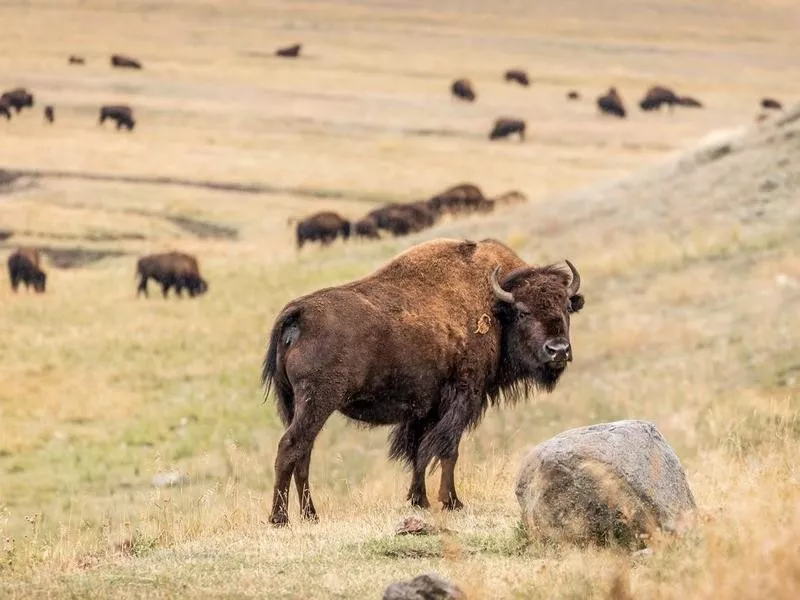
Getty Images
We’ve all seen videos of humans approaching bison in U.S. parks to get the ultimate photo for social media, but that’s not a wise idea, as they can weigh up to 2,000 pounds and are known to charge people who get too close.
They don’t charge to eat their prey — they just don’t want humans close to them and will headbutt or gore the source of their annoyance.
How to Avoid Danger

Getty Images
If a bison begins to charge, run for cover, preferably behind something big. Climbing a tree is also an option, as they can’t climb. Bulls become more aggressive during the rutting season in mid-summer, and mothers may also become more protective of their young at this time.
If you’re traveling with a dog, keep it leashed or back at the hotel — dogs are known to provoke attacks.
Primates

Getty Images
Even though people do have primates as pets, it’s not recommended.They have been known to attack children as well as adults and have caused fatalities in both.
In one instance, a woman contracted Herpes B from a macaque bite, and in another more famous case, a Connecticut woman’s face was torn off by a pet chimpanzee.
How to Avoid Danger

Getty Images
In captivity, the best way to avoid a primate attack is to avoid the primate. Wild primate attacks are rare but have happened. If you come across wild monkeys while traveling, do not make eye contact or show your teeth, as the animal can read that as a sign of aggression. Don’t yell, make sudden movements, wear brightly colored clothing or shiny jewelry.
Don’t feed them and don’t keep food on your person, as they have a keen sense of smell. When taking a photo, be aware that some monkeys have attacked on seeing their reflections in the camera lens.
Wolves

Getty Images
Wolf attacks are rare, but do occur in the U.S. and Canada. Domestic dogs are descendants of wolves but are much smaller in stature. Wolves can weigh close to 200 pounds and can reach 7 feet in length.
Their canine teeth can be up to an inch long and have a bite force with more than 1,200 pounds of pressure. Wolves generally avoid humans, but the closer we get to their habitat, the more likely attacks will happen.
How to Avoid Danger
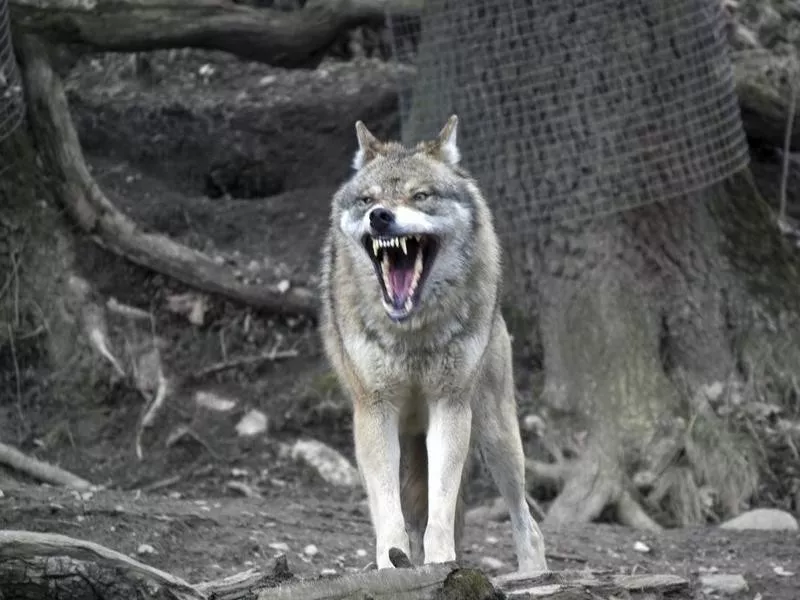
Getty Images
If you’re close to a wolf, remain calm and try to make yourself look large. Back away slowly, do not run, and keep eye contact.
If it looks like an attack is imminent, yell and throw objects as you continue backing away.
Tiger

Getty Images
Most tiger attacks usually occur in Asia, but they are also plenty of tigers in the U.S. owned by private zoos. Of the big cats, they have the most fatalities.
At 300 pounds, with 3-inch claws and 7-inch teeth, attacks have usually occurred by accident when a tourist has gotten too close, particularly to a mother with her cubs.
How to Avoid Danger
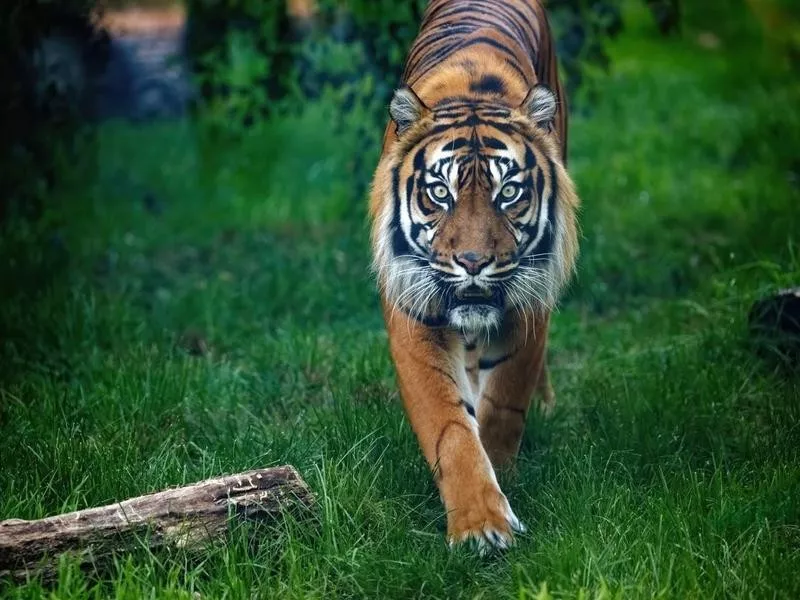
Getty Images
Tiger attacks are rare‚ but if confronted with a tiger, stay calm and leave the area as quickly as possible. Stay upright, as they tend to attack people crouching or working in fields.
If you’re in a city, chances are you’ll never run into one — tigers don’t usually roam into populated areas.
Coyotes
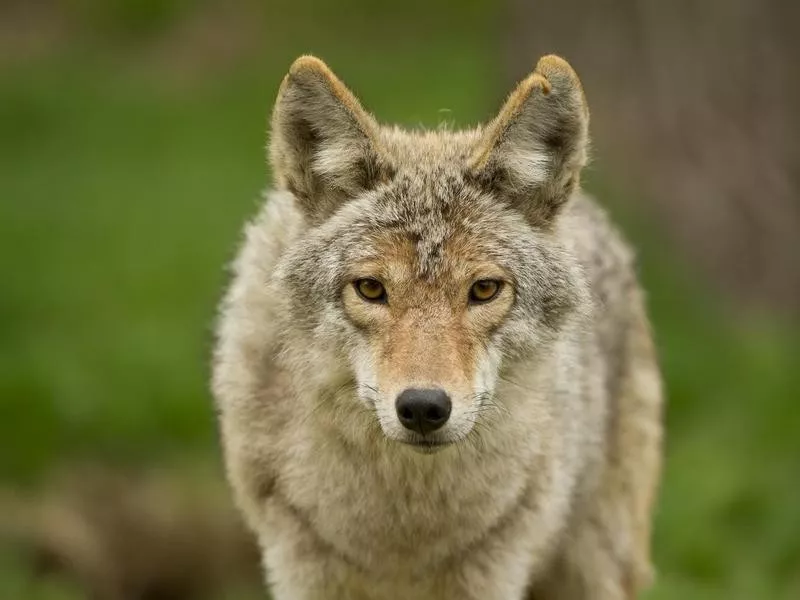
Getty Images
Coyotes roam rural and urban areas all over North America and shy away humans. They do, however, go after small pets. These nocturnal creatures don’t always run away when a human approaches and become accustomed to people who have encroached on their habitats.
In the instances humans have been attacked, it’s usually because the coyotes were being fed by people or pet owners were trying to save their pet from certain death.
How to Avoid Danger
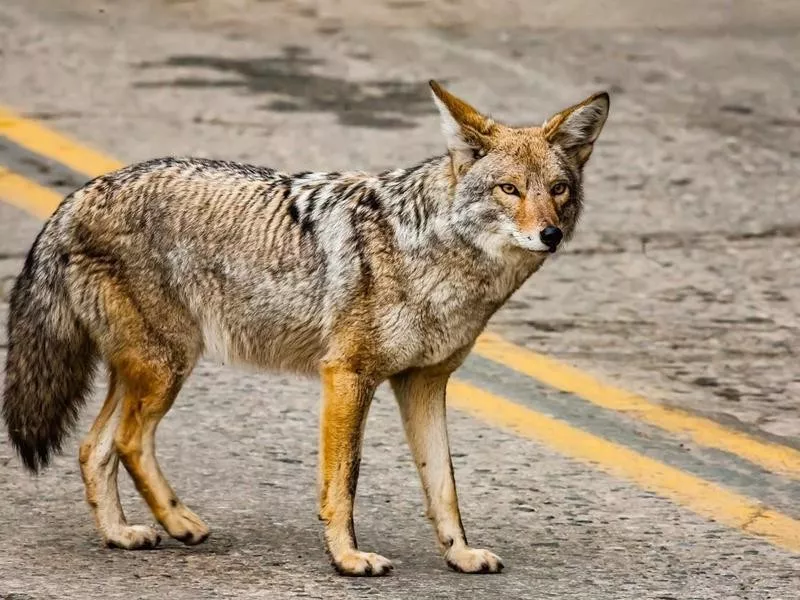
Getty Images
A coyote that bites someone will have to be killed and tested for rabies.
The best way to prevent a coyote attack on pets (and indirectly, people) is to bring animals in at night and seal or clean all avenues for food around your home, like trash cans, spilled bird seed or fallen fruit.
Mosquitoes

Getty Images
This tiny insect kills more than 700,000 people every year around the world due to the diseases it carries, which include malaria, dengue fever, yellow fever, Japanese encephalitis and the Zika virus.
With more than 2,500 species of the insect on nearly every continent, they are impossible to avoid entirely.
How to Avoid Danger
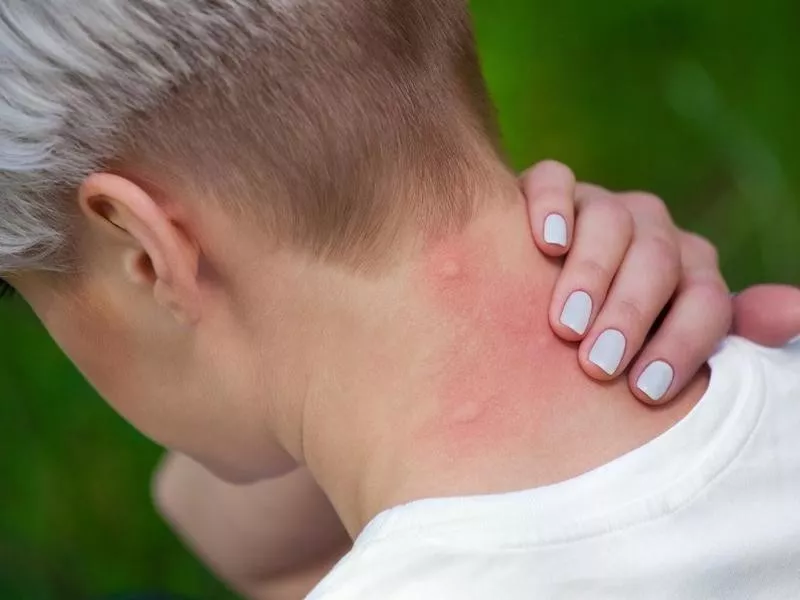
Getty Images
DEET insect repellent, citronella candles, staying inside from dusk to dawn, netting over sleeping areas or strollers or when sleeping, wearing long pants and long-sleeved shirts, and natural oils are just some of the things that can keep mosquitos at bay.